India is the largest country in South Asia. It has a large area and a very large population. Included in the top ten countries in the world for these two indicators. Birthplace of ancient Indian culture. On its territory there are many historical and architectural monuments. The current rapid development of the country contributes to technological progress and improvement in the quality of life of the population, but, by European standards, they are still low.
The natural wealth of the country makes it an incredibly popular travel destination. Since ancient times, other nations have sought to see all its wonders with their own eyes. Each state is a hotel set of attractions, among which it is easy to find places for every taste.
Large cities (New Delhi, Mumbai) are megacities, noisy and active. Outback - jungle villages, secluded beaches. There are many exotics in the country, in all spheres of life. The nature of the tropics, intricate palaces and temples, the great Ganges and the Indian Ocean, colorful saris and spices. In India, there is almost nothing familiar to a resident of another country. The main directions of tours: excursions ("Golden Triangle"), beach (Goa), Ayurveda and spiritual practices. A separate direction is the Himalayas. As souvenirs, you can bring wonderful fabrics, spices, tea, jewelry. The best time to visit the country is from October to March.
What to see in India?
The most interesting and beautiful places, photos and a brief description.
Taj Mahal
The most famous and majestic mausoleum of the country. Snow-white huge tomb of Shah Jahan and his wife. The building is made of rare marble inlaid with semi-precious stones. Visited by millions of tourists, protected by UNESCO.
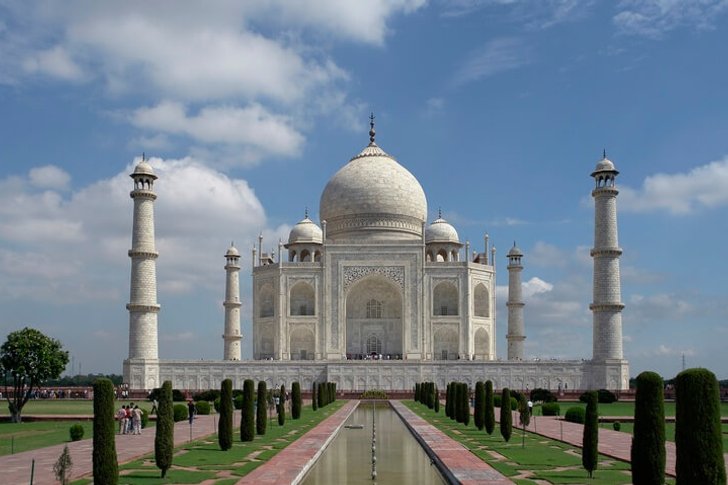
City of Varanasi
The oldest city in India. Located on the Ganges River, it serves as a place of pilgrimage for many locals and visitors. Ritual actions are performed on the banks. The center of the world for Hindus, the most important and revered place for them. It has a unique history, architecture, way of life.

Ganges river
The largest and longest river in India. It has great economic and cultural significance for the country. Sacred river for Hindus, a place of numerous rituals. It originates in the Himalayas, descends to the Bay of Bengal. Partially navigable. Flora and fauna are gradually becoming poorer, but are still of interest to tourists. Many cities and temples were built along the banks.
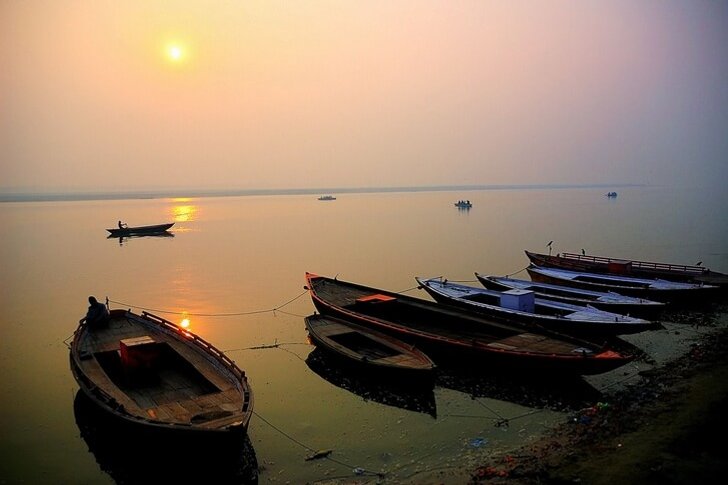
Lotus Temple
Relatively young temple in New Delhi, built in 1986. Outwardly, it is very similar to a huge, snow-white lotus flower. The main temple of the Baha'i religion in India. Exceptional architectural design building, unusually spectacular at any time of the day. There is a garden next to the temple. One of the most popular places for tourists in Delhi.

Chhatrapati Shivaji Station
The most unusual building in Mumbai, its symbol. The architecture of the station is bizarre and very decorative, reminiscent of the Maharaja's palace. Built by British architects, during the colonization, but stylized according to local traditions. Formerly named after Queen Victoria. It was used for filming Slumdog Millionaire.
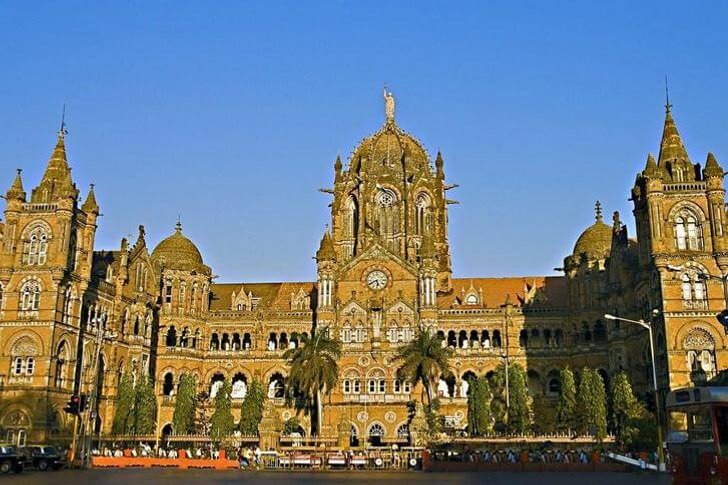
Ajanta cave temples
Buddhist temple complex. It is a set of rooms for prayers and the life of monks, carved in stone and decorated with rich carvings and columns. The wall paintings of the complex are interesting and valuable, many of the surviving fragments are classified as traditional Indian miniatures.
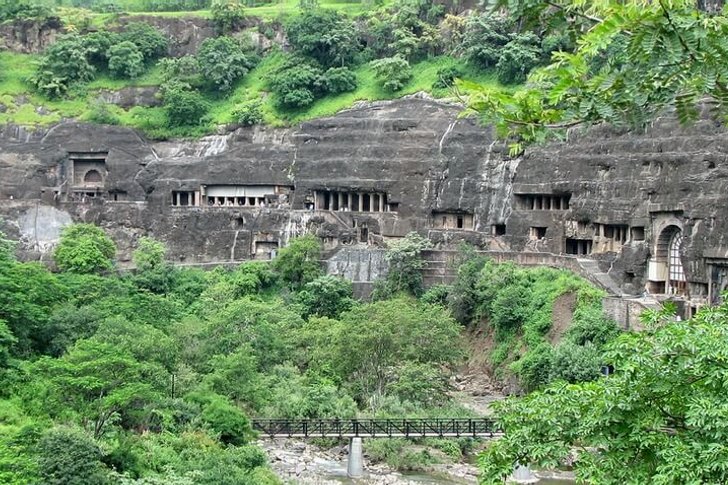
Humpy
The site of an ancient city, the capital of the Vijayanagar Empire. Now there are the remains of ancient buildings and functioning Hindu temples. There are 18 ancient architectural and historical monuments in the Hampi area. Protected by UNESCO.
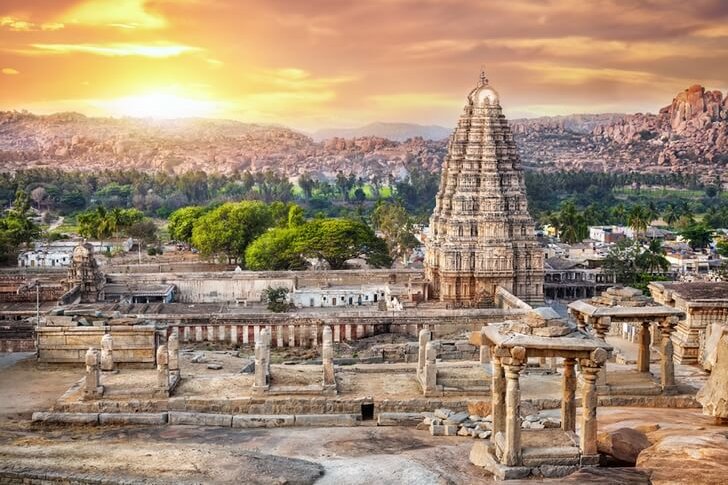
Minaret Qutub Minar
One of the tallest minarets in the world. It is a 72-meter building made of brick, decorated with carvings and artistic masonry. It was built in Delhi by several generations of sultan rulers. Protected by UNESCO.
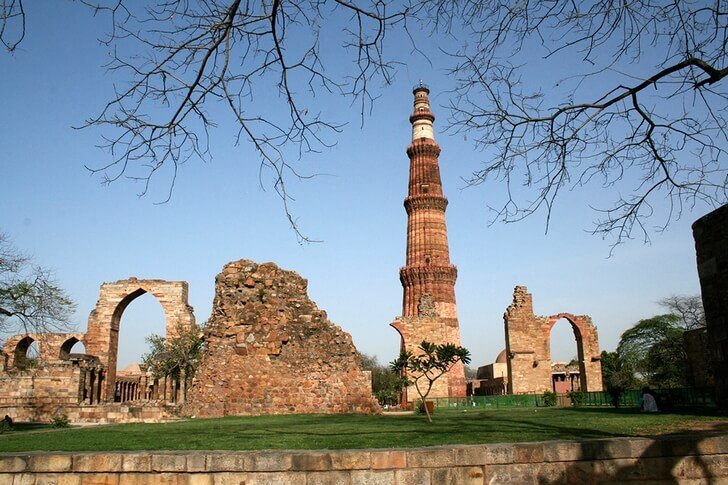
Gateway of India in New Delhi
Monument to Indian soldiers who died in the First World War. Opened in 1931. Located right in the center of the capital. It looks like the Arc de Triomphe in Paris. The monument is made of sandstone, about 40 meters high. The names of the dead are engraved on the walls of the arch. Nearby is the Tomb of the Unknown Soldier. There is a large park around the memorial.
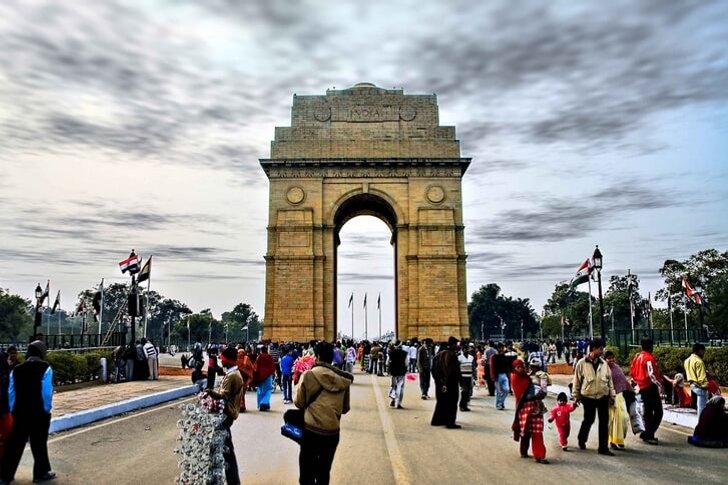
Gateway of India in Mumbai
Symbolic arch gate built on the embankment in Mumbai. It was established in honor of the visit of the country by King George V. Through this symbolic gate, the last British soldiers left India after gaining independence.

Hawa Mahal Palace
Located in the city of Jaipur, its second name is the Palace of the Winds. An architecturally unique structure, all pierced with windows. Since the palace was built for a harem, all the windows were covered with marble bars, the white color of which goes well with the red walls of the building. Five floors, about a thousand windows framed in lacy stone.

Red Fort in Agra
A grandiose fortress built of red sandstone. Located in Agra, is one of the two most significant attractions in the region. It was built by several generations of the Great Moghuls, the beginning of construction is attributed to the middle of the 16th century. Inside the impregnable walls is a whole complex of buildings, palaces and parks. Included in the UNESCO World Heritage List.

Mehrangarh fortress
A huge fortress-palace on top of a mountain. Located in the state of Rajasthan, directly above the city of Jodhpur. Construction began in the middle of the 15th century, along with the construction of the city. The walls and gates were erected for several centuries and became simply monumental. Until the middle of the 20th century, local rulers lived in the fortress. Inside there is a museum, palaces and viewing platforms on the city.

Lake Picola Palace
The palace of the local ruler was built right in the center of the reservoir. On the water surface there is a white-stone eastern castle, richly decorated with carvings. Currently, it is rented to tourists and there are about a hundred luxurious rooms inside. One of the James Bond films, Octopussy, was filmed here.

Dudhsagar waterfall
The largest waterfall in India. Located in a natural park - the largest in Goa. The road runs through the tropical forests, in the real jungle, which is home to many animals and birds. You can get to it only by special transport (jeeps). The jets fall from a height of 300 meters and are white in color. There is a romantic legend explaining this feature.

goa
Indian state, where about 100 km of beaches go one after another. It is divided into North and South. The northern coast is more “youthful”, it can be noisy and fun here. The southern one is quieter, there are fewer hotels on it and they are more expensive. Almost all beaches are sandy and ideal for relaxation. The proximity of the sea determines the richest diet of fresh seafood.

Holi festival of colors
Spring Festival, which is celebrated annually in India. It is celebrated for several days, has its obligatory traditions. One of the brightest and most popular is sprinkling each other with a special coloring powder. All participants in the fun are painted in different colors from head to toe.

Bollywood
An Indian film factory named after Hollywood. Located in Mumbai, one of the largest film concerns in the country. It releases films in several languages, both sharply social and entertaining. Works with great productivity, film production never stops.
